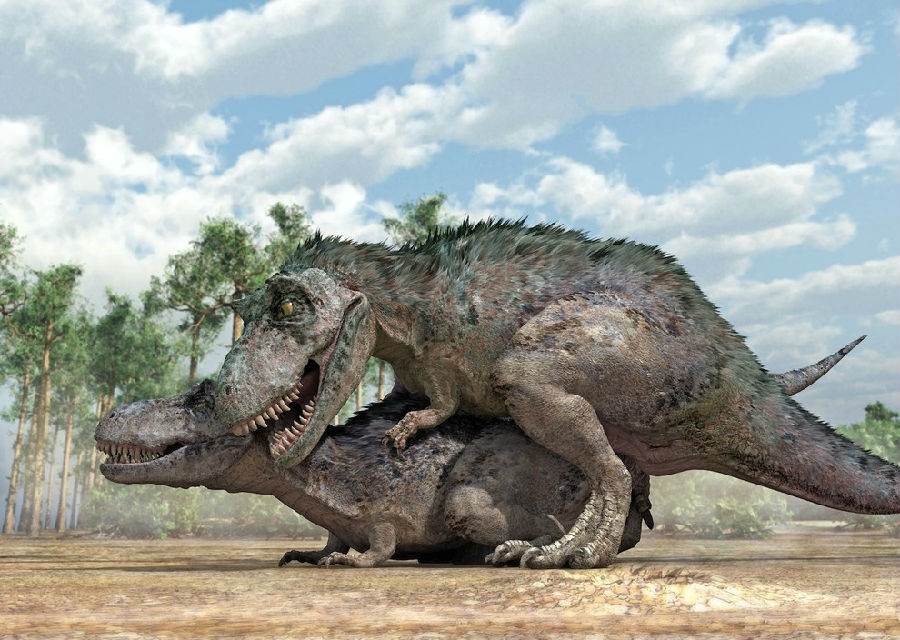A dinosaur paradise just hours ago...
几小时前还是恐龙天堂。
North America is now a living hell.
现在美洲却成了活生生的炼狱。
But the Ejecta isn't finished yet, not by a long shot.
不过喷出物还没有喷完,离喷完还差得远呢。
Less than an hour since the asteroid impact, hundreds of species of dinosaurs
小行星撞击后不到一小时,西半球各处几百种恐龙惨遭灭绝。
The ejecta cloud continues to spread at high altitude.
喷出物云团继续在高空扩散。
As it spans the globe, the effects on the ground very dramatically.
随着它散布整个地球地表也各自受到不同的影响。
8,000 miles away in Asia, the cloud rolls in silently from the east.
在八千英里外的亚洲,云团静静地从东方涌来。

In Mongolia, temperatures on the ground tick upwards a few degrees hotter every second.
在蒙古,地面温度快速蹿升,每秒升高几度。
There's no audible warning, only mounting heat.
没有听得见的警告声只有窜升的热气。
As the air reaches 120 degrees, the only hope is shelter.
空气上升到120度时,唯一的希望就是避难。
At 160 degrees, survival is measured in minutes -- over 200 degrees, just seconds.
高达160度时,几分钟就能定生死。超过200度的话,就只在几秒之内。
90 minutes after impact, the temperature on the ground in Mongolia peaks at 300 degrees.
撞击之后90分钟,蒙古的地面温度升到300度。
But not every dinosaurs's baked alive
不过不是每只恐龙都被活生生烤死。
The microclimate of a cave can keep a handful of survivors cool enough to breathe,
洞穴里的微气候,让少数存活的动物保持凉快能够呼吸。
but it's a refuge that has to be shared, forcing an uneasy peace between sworn enemies...
不过这个避难搜需要大家共享,不共戴天的仇家勉强互相容忍。
one that's already fraying at the edges.
和平局面快要崩溃了。
Back in the Pacific Northwest, the dense fog still shields the valley from the intense heat above.
回到西北太平洋岸,浓雾还能为山谷遮挡住上方的炽热。
In sheltered areas like this, small pockets of dinosaurs hang on.
在这样有遮蔽的区域还有几群恐龙坚持着。
For the Triceratops here, the high temperatures and humidity force them to keep moving.
对这里的三角龙来说,高温和湿气迫使它们继续前进。



